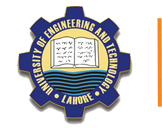Abstract: | Due to scarcity of energy resources and rapid growth of population, the need for finding new,
more efficient and sustainable method for cultivation and food production must be increased in
order to feed the world. To alleviate this process, we are designing a system for precision
agriculture; a highly effective farming strategy that allows farmer to better allocate input (e.g. seed
and fertilizers) and increase productivity, while minimizing environmental impact. This
embedded system is capable to reduce manual monitoring of the field; owing to its motion in
multi dimension, data collection using Wi-Fi link and remote sensing. Moreover, its capability of
performing sophisticated task such as ploughing, precise distribution of seed, watering and
spraying of pesticides, reduces the need for sufficient skilled manpower and therefore, increases
the yield. An embedded system is proposed consisting of two parts, a machine end and a control
section, which are intercommunicated using wireless technologies. The implemented
functionalities are 3D Motion, Data acquisition via Sensor, Monitoring and Wireless
Communication. In this project, we made an effort to overcome some problems in agriculture.
The rapid growth in the industries is influencing the labour who are situating in the villages to
migrate to the cities. This will create the labour problem for the agriculture. As the prices of
commodities such as food grains, fuels, cloths and other essentials of daily life is increasing
rapidly the labour demand for the more wages from the owners. These factors influencing the
farmers who are interested in agricultural activity to leave their land uncultivated. By
implementing this project in the field of agriculture, we can help the farmers in the initial stage
of cultivation i.e. during the seeding, watering and fertilizing. The goal is to accelerate the speed
of work by using robot and to give farmers a more complete picture of the current and historic
crop status, in order to foster better decision making. It is expected that such decisions will
benefit both farming and irrigation by saving time and resources. |






